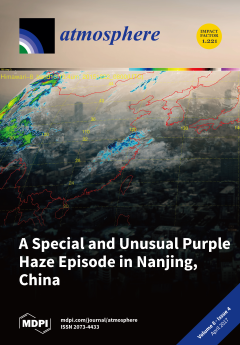A year-long study was performed to comprehensively investigate the mass concentration, water-soluble ions, organic and elemental carbons, and elemental components of atmospheric fine particles from March 2006 to February 2007 in Qingdao. The results showed that PM
2.5 concentration was over twice the National Ambient Air Quality Standards of 35 μg/m
3 (GB3095-2012), with the highest value in winter (110 μg/m
3) and the lowest in summer (42.8 μg/m
3). Non-sea salt-SO
42− (nss-SO
42−), NO
3−, and NH
4+ were the dominant water-soluble ions in PM
2.5, and showed the highest concentrations in autumn, winter and autumn, respectively, and all had the lowest concentrations in summer. Organic carbon (OC) and elemental carbon (EC) had the lowest levels in summer and the highest values in winter and autumn, respectively. The lower acetic/formic acid (A/F) ratio in summer suggested a predominant secondary formation of water-soluble organic acids. Cl-depletion mainly occurred in summer, along with the largest sea salt proportion in particles in a year when winds came from the southeastern sea. The enrichment factors (EFs) of elements followed an increasing order: Si, Al, Ti, Mg, Ca, Fe, Na, Sr, K, Mn, Ba, V, Cr, Ni, Co, Sc, Cu, As, Cl, Zn, Pb, S, Br, Cd, and Se. The higher EFs from 10.1 to 10,487 for Sr, K, Mn, Ba, V, Cr, Ni, Co, Sc, Cu, Cl, Zn, Pb, S, Br, Cd, and Se suggested the significant influence of anthropogenic sources in the area. Mass closure showed that (NH
4)
2SO
4, organic matter, and NH
4NO
3 were the main components, and contributed 31.0%, 25.2%, and 14.0% of PM
2.5 mass in Qingdao, respectively. Source apportionment results showed that secondary sulfate, nitrate, and coal combustion were the main sources. Based on this study and previous publications, the PM
2.5 characteristics—including seasonality in mass and chemical species concentrations and Cl-depletion in summer—were obtained across coastal cities in China.
Full article





